.png)
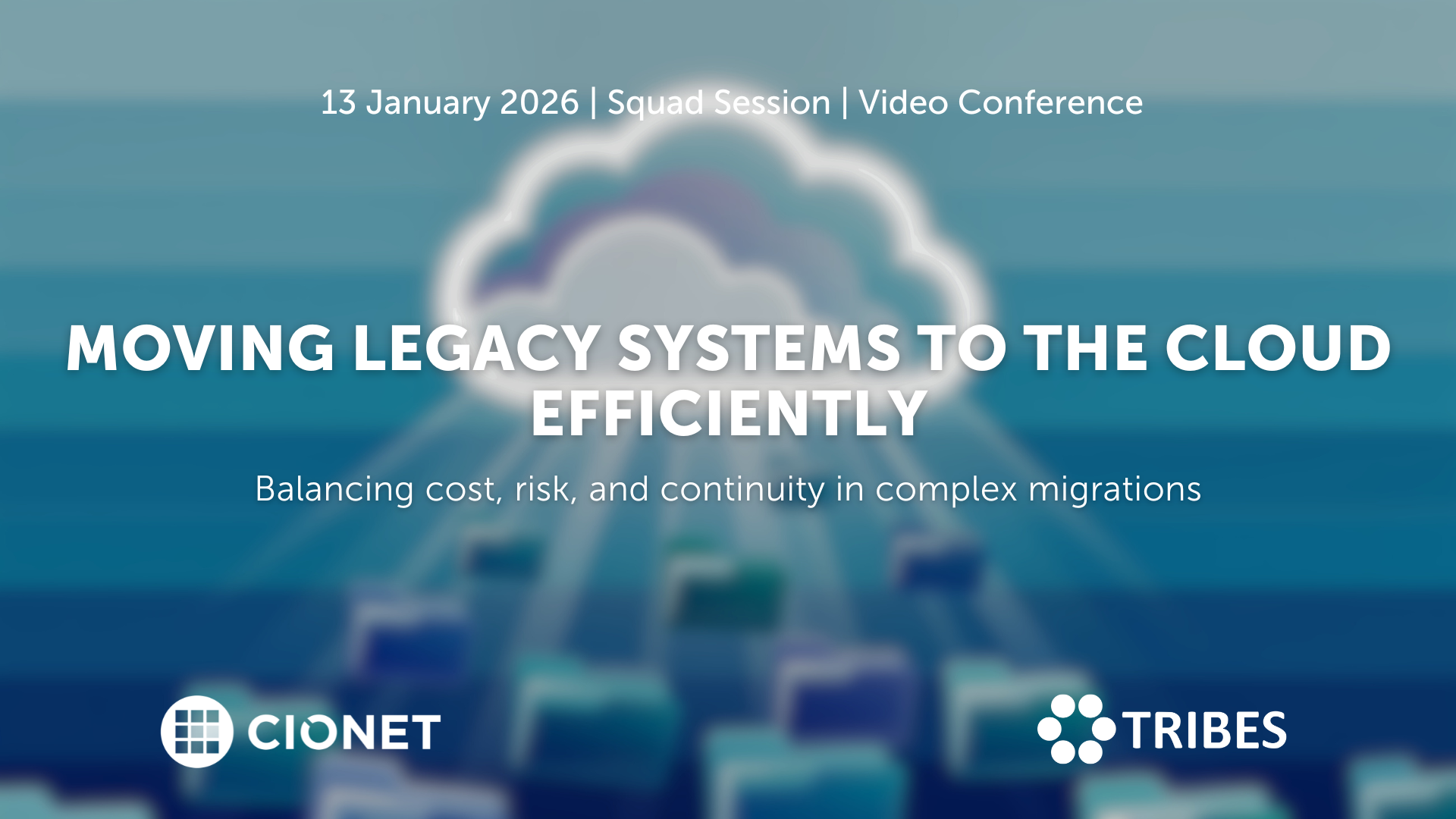
Belgium 13-1-26 Squad Only Virtual english
Migrating legacy systems to the cloud remains one of the toughest balancing acts in IT. Every choice affects stability, cost, and trust at once, and what starts as a modernisation effort quickly turns into a negotiation between ambition and reality. Suddenly budgets rise, dependencies appear late, and timelines tighten as old architectures collide with new expectations. In the end, success depends on sequencing, ownership, and aligning business priorities with infrastructure limits, and not only on technical readiness. Making it work requires more than a plan on paper. Knowing which systems genuinely belong in the cloud, which can wait, and which should stay put shapes the entire roadmap and defines its success. Each refactoring decision sets the level of future flexibility, but it also drives cost and risk. The trade-offs between speed, sustainability, and resilience only become clear once migration begins and pressure builds. Let’s discuss how to plan migrations that stay on track, manage hidden dependencies, and handle downtime with confidence. Let’s also discuss how governance, testing, and vendor coordination keep progress visible and credible. Are you in? A closed conversation for those who turn cloud migration from a disruption into a long-term advantage.
Read More.png)
Belgium 20-1-26 All Members Physical english
CIOs today are being judged less as technology leaders and more as portfolio managers. Every euro is under scrutiny. Boards and CFOs demand lower run costs, higher efficiency, and clear ROI from every digital initiative. Yet, they also expect CIOs to place bets on disruptive technologies that will keep the enterprise competitive in five years. This constant tension is redefining the role. In this session, we go beyond FinOps and cost reporting to tackle the strategic financial dilemmas CIOs face.
Read More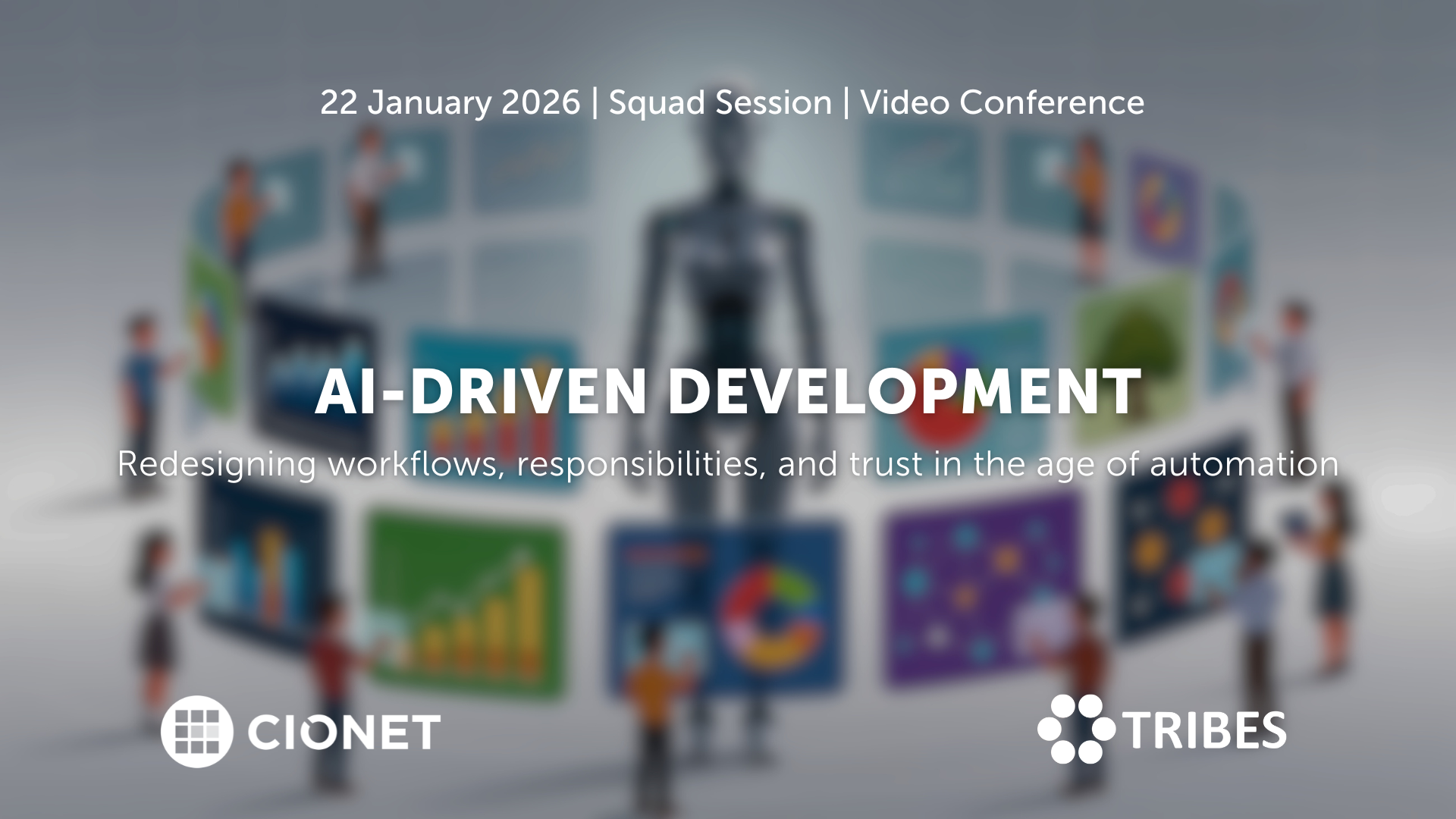
Belgium 22-1-26 Invitation Only Virtual english
AI coding assistants entered development teams quietly, but their impact grows by the day. What started as autocomplete now shapes architecture decisions, documentation, and testing. And when productivity gains are visible, so are new risks: security blind spots, uneven quality, and the slow erosion of shared standards. Teams move faster, but not always in the same direction. The challenge has become integration rather than adoption. And new questions have risen: how do you blend automation into established practices without losing oversight? When is human review still essential, and what should the rules of collaboration between developer and machine look like? As AI tools learn from proprietary code, where do responsibility and accountability sit? Let’s talk about how to redefine those workflows, balancing creativity with control, and protecting code quality in a hybrid human-AI environment. A closed conversation on where AI accelerates progress, where it introduces new debt, and how development culture must evolve to stay credible.
Read More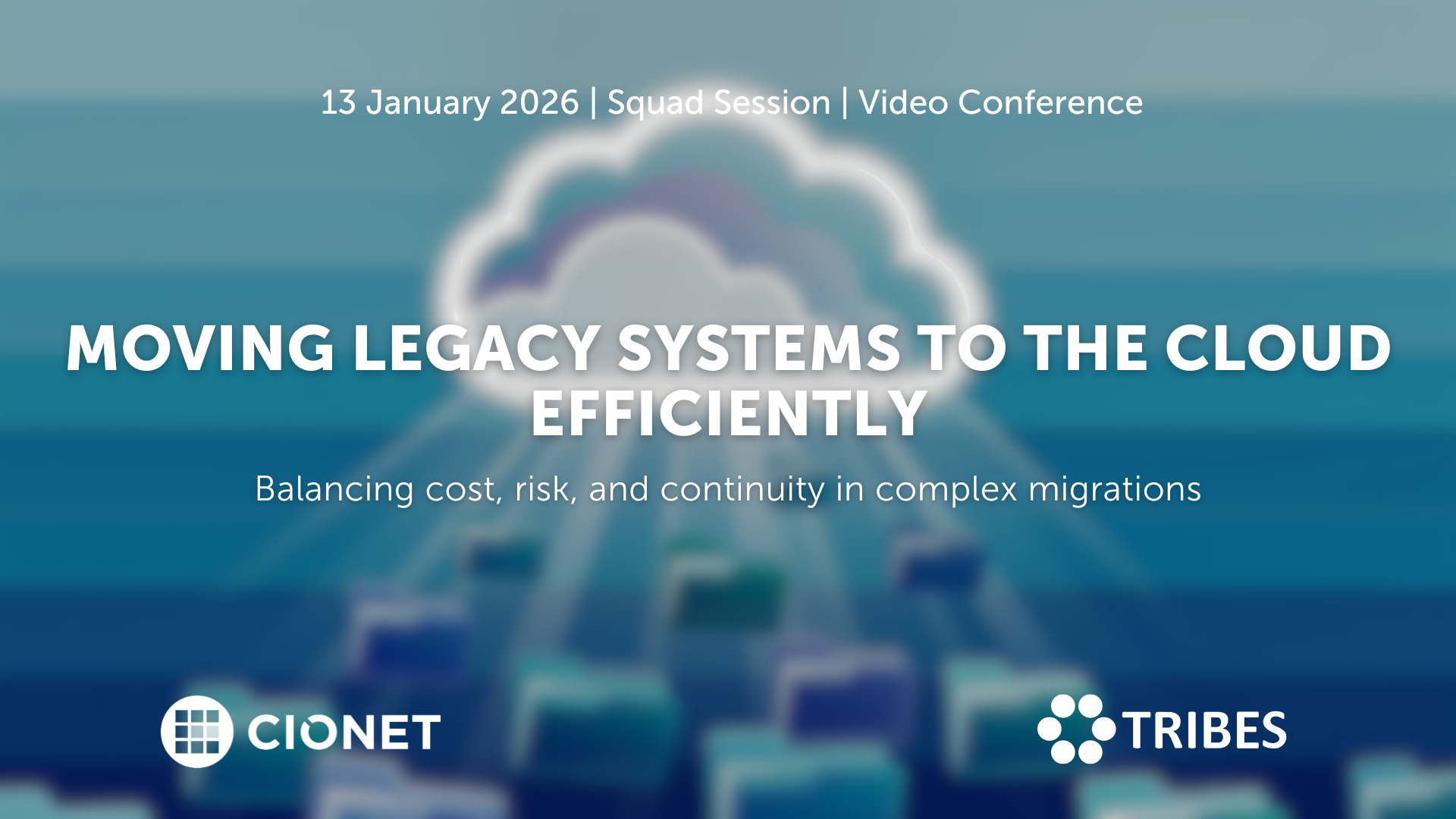
January 13, 2026 Squad Session Invitation Only Virtual english
Migrating legacy systems to the cloud remains one of the toughest balancing acts in IT. Every choice affects stability, cost, and trust at once, and what starts as a modernisation effort quickly turns into a negotiation between ambition and reality. Suddenly budgets rise, dependencies appear late, and timelines tighten as old architectures collide with new expectations. In the end, success depends on sequencing, ownership, and aligning business priorities with infrastructure limits, and not only on technical readiness. Making it work requires more than a plan on paper. Knowing which systems genuinely belong in the cloud, which can wait, and which should stay put shapes the entire roadmap and defines its success. Each refactoring decision sets the level of future flexibility, but it also drives cost and risk. The trade-offs between speed, sustainability, and resilience only become clear once migration begins and pressure builds. Let’s discuss how to plan migrations that stay on track, manage hidden dependencies, and handle downtime with confidence. Let’s also discuss how governance, testing, and vendor coordination keep progress visible and credible. Are you in? A closed conversation for those who turn cloud migration from a disruption into a long-term advantage.
Read More
January 22, 2026 Squad Session Invitation Only Virtual english
AI coding assistants entered development teams quietly, but their impact grows by the day. What started as autocomplete now shapes architecture decisions, documentation, and testing. And when productivity gains are visible, so are new risks: security blind spots, uneven quality, and the slow erosion of shared standards. Teams move faster, but not always in the same direction. The challenge has become integration rather than adoption. And new questions have risen: how do you blend automation into established practices without losing oversight? When is human review still essential, and what should the rules of collaboration between developer and machine look like? As AI tools learn from proprietary code, where do responsibility and accountability sit? Let’s talk about how to redefine those workflows, balancing creativity with control, and protecting code quality in a hybrid human-AI environment. A closed conversation on where AI accelerates progress, where it introduces new debt, and how development culture must evolve to stay credible.
Read More
January 27, 2026 Squad Session Invitation Only Physical english
Zero Trust sounds simple on paper: trust no one, verify everything. But once you start implementing it, the fun begins. Legacy systems, hybrid networks, and human habits don’t read the manual. The idea is solid; the execution, not so much.
Read More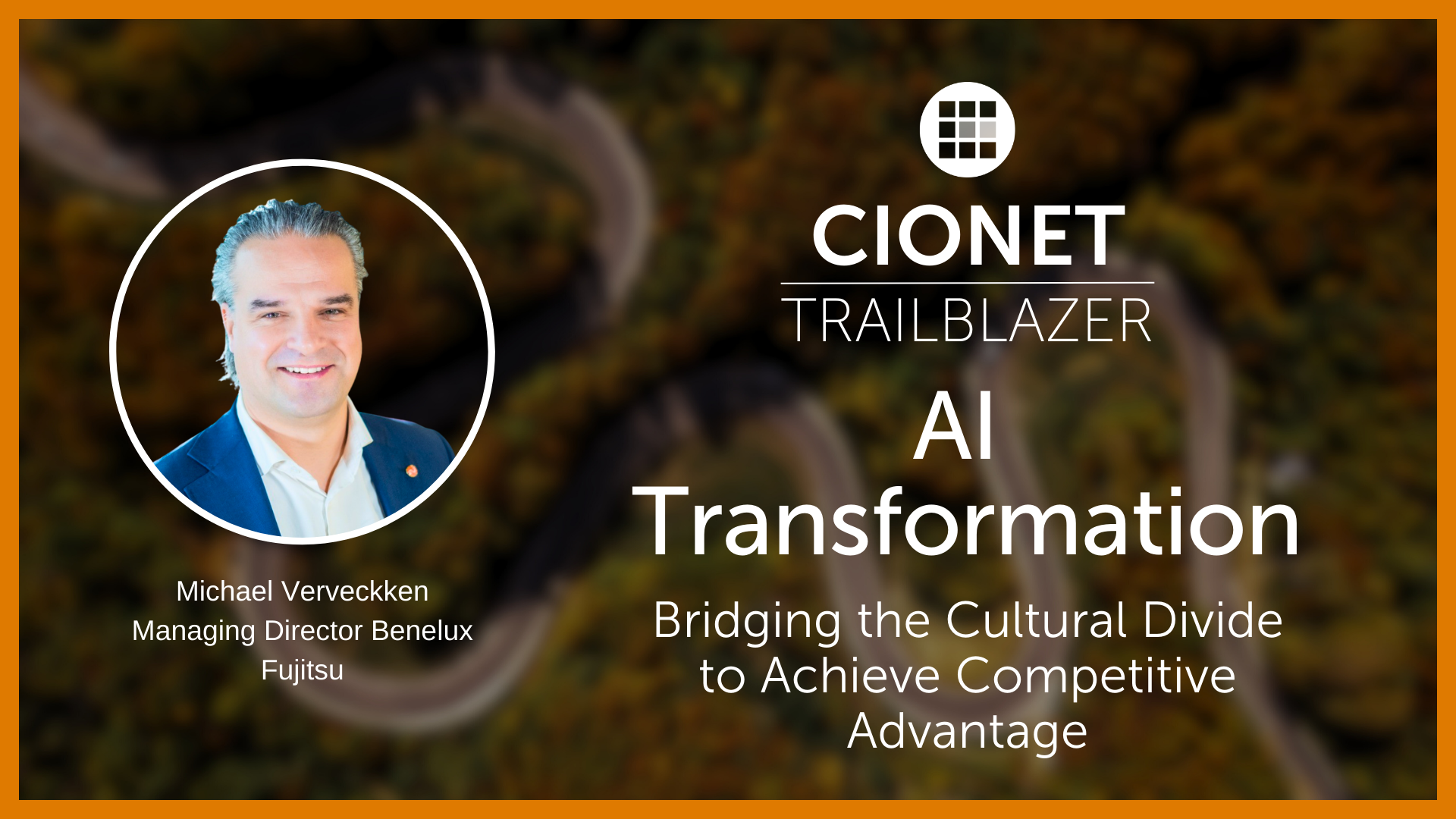
CIONET Trailblazer: AI Transformation: Bridging the Cultural Divide to Achieve Competitive Advantage
Published on: December 17, 2025 @ 9:16 AM
novobanco delivers personalized digital experiences to customers
Portugal's novobanco sought to reinvent banking with personalized, digital customer experiences. The bank decided to migrate to a container- and microservices-based application infrastructure. Microsoft Azure Red Hat® OpenShift®, a jointly managed solution, helped the bank adopt a hybrid environment for new and existing applications.
Portugal’s novobanco sought to reinvent banking with personalized, digital customer
experiences based on open banking practices. To support this strategy, the bank decided to
migrate to a container- and microservices-based application infrastructure. Microsoft Azure
Red Hat OpenShift, a jointly managed solution, helped the bank adopt a hybrid environment for
new and existing applications. Now, using continuous integration and continuous delivery (CI/
CD) and DevOps approaches, novobanco has increased its digital services adoption, reduced
time to market for applications, and improved partner integration using open banking
application programming interfaces (APIs).
Rethinking physical and digital banking experiences
novobanco operates a vast network of branches and business centers across Portugal,
complemented by its novobanco Linha Direta telephone banking service and digital banking
offering, novobanco Online.
Shortly after American equity firm Lone Star Funds acquired 75% of its capital in 2017, the bank
engaged management consulting firm McKinsey & Company to help define a three-year IT strategy.
“We needed to change the way we developed our offerings to speed time to market,” said Manuel
Domingues, CIO, novobanco. “Achieving that goal meant addressing four key areas of our business
to increase efficiency: our technology, our processes, our organization, and our culture.”
Working with McKinsey, the bank planned a new approach to digital business based on cloud
computing and big data, supported by a microservices-based architecture and DevOps practices.
This new approach would not only help reduce operating costs but also support entry into new digital
markets with open banking application programming interfaces (APIs).
“By changing how we acquire and engage with our customers, across physical and digital channels,
we could meet our larger goal of expanding our customer base,” said Domingues.
Building a managed, secured environment for application development
After searching for a cloud platform, novobanco chose Red Hat OpenShift for its local enterprise
support and multicloud capabilities.
“Red Hat OpenShift was the ideal choice to be able to deliver customer services flawlessly while
switching between hosting containers on-premise and in the cloud,” said Domingues.
The bank worked with Red Hat Consulting to test several use cases, including running a microservice
in Red Hat OpenShift using the Spring Boot Java™ framework, a DevOps pipeline for automating
development processes, and a proof of concept (POC) demonstrating digital channel interactions.
Next, the bank deployed Microsoft Azure Red Hat OpenShift in production and began migrating
its applications—as microservices—to this on-premise environment, jointly managed by Red Hat
and Microsoft. Red Hat’s single sign-on (SSO) technology helps secure novobanco’s microservices,
integrating with the bank’s existing Azure Active Directory servers to validate user credentials and
extract identity information.
The bank now uses its container environment—as well as React.js, an open source JavaScript user
interface library—to design and deploy low-code front-end applications, such as its smartphone app.
Focusing on innovation for customers and partners
Reduced time to market for digital services
With a continuous integration and continuous delivery (CI/CD) approach supported by DevOps
processes and automation, novobanco can deliver new, personalized services to its customers
faster. For example, the bank recently developed new push notifications for transaction validation
that improve security and reduce messaging costs for customers. Additionally, using Red Hat and
Microsoft’s cost-effective, jointly managed service also helps novobanco stay productive by
mitigating time-consuming infrastructure maintenance tasks
The bank is already seeing positive outcomes from spending less time on routine delivery processes
and more time on innovation, including 20% year over year (YOY) growth in mobile interactions and
a 7% YOY increase in the number of active digital customers. As the result of a 165% YOY increase
across most of its portfolio, digital now makes up more than 1/3 of the bank’s total product sales.
As part of this approach, the bank is developing frameworks for various needs—such as simulations or
integration—with defined patterns that can be reused by more than one development team
Improved responsiveness with scalable, supported hybrid infrastructure
With plans to design all new applications to be cloud-native, novobanco can use its vendor-agnostic
Red Hat OpenShift container environment to prevent lock-in to specific cloud providers. The flexibility to move workloads between clouds will help the bank cost-effectively scale to meet demand.
Additionally, developers no longer need to build applications to run in specific environments, improving productivity and supporting DevOps collaboration.
“With Red Hat OpenShift, we can move workloads between on-premise and off-premise environments without needing to change any code,” said Domingues. “Some applications will remain on
premise for now, such as those with specific regulatory requirements, any that might be affected by
latency, or any that have not yet been optimized for microservices or the cloud. When we’re ready, we
have the flexibility to move them to Azure Red Hat OpenShift without any service interruptions or
outages.”
Improved support for integration with third-party partners
Supporting its open banking API approach with a scalable, secure integration process will help novobanco enter new digital banking markets by partnering with other financial services organizations.
“Running containers and microservices on Red Hat OpenShift allows us to support open banking APIs
as well as integrations with SaaS or PaaS technology solutions from partners,” said Domingues.
Enhanced technology adoption with expert support and guidance
Engaging Red Hat Consulting and participating in Red Hat Training on Red Hat OpenShift helped the
bank’s teams quickly gain the necessary skills to support its digital strategy. In addition to support
during the POC stage, Red Hat consultants helped stabilize the bank’s OpenShift cluster in production, set up a cluster for testing configuration changes, and manage platform implementation and
upgrades. For example, the bank continues to work with Red Hat for infrastructure, development,
and application architecture optimization.
“Red Hat Consulting helped us take advantage of best practices so that we could focus on developing solutions and integrations that meet our business needs and delivering new features to market
faster,” said Domingues.
Enhancing hybrid approach to continue digital services journey
novobanco plans to continue using Red Hat OpenShift as the foundation for both legacy and new
applications, with a goal to shift up to half of its modernized applications to run in a multicloud environment. The bank is also looking to adopt Red Hat Runtimes, a set of lightweight runtimes and
frameworks that are ideal for highly distributed microservices architectures.
“Hybrid infrastructure and DevOps are changing the way we develop our services and applications,
and Red Hat OpenShift is an essential part of our journey to digital delivery,” said Domingues. “As we
evolve, we expect to achieve further scalability and reliability, among other benefits.”
About novobanco
novobanco is a reference in the Portuguese financial system, recognized by its high standards
of service quality and commercial dynamics with which its clients, individuals, companies, and
institutions are served. It addresses a broad range of clients’ financial needs, acting in a transversal
way in all areas of financial services, such as retail and corporate banking, asset management, and
insurance. https://www.novobanco.pt/
306 Views 0 Likes Read More

Digital Transformation is redefining the future of health care and health delivery. All stakeholders are convinced that these innovations will create value for patients, healthcare practitioners, hospitals, and governments along the patient pathway. The benefits are starting from prevention and awareness to diagnosis, treatment, short- and long-term follow-up, and ultimately survival. But how do you make sure that your working towards an architecturally sound, secure and interoperable health IT ecosystem for your hospital and avoid implementing a hodgepodge of spot solutions? How does your IT department work together with the other stakeholders, such as the doctors and other healthcare practitioners, Life Sciences companies, Tech companies, regulators and your internal governance and administrative bodies?
Read More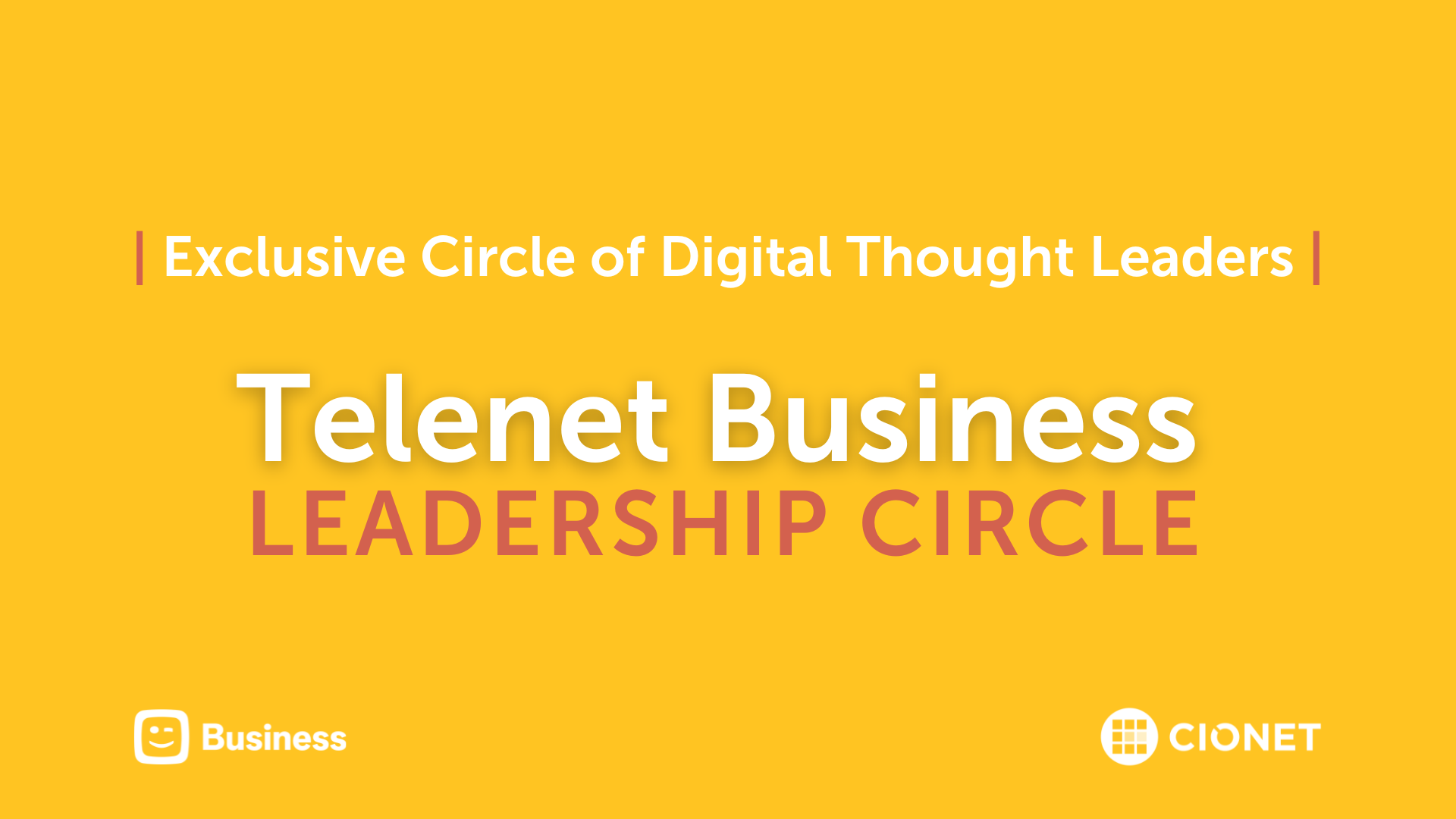
The Telenet Business Leadership Circle powered by CIONET, offers a platform where IT executives and thought leaders can meet to inspire each other and share best practices. We want to be a facilitator who helps you optimise the performance of your IT function and your business by embracing the endless opportunities that digital change brings.
Read More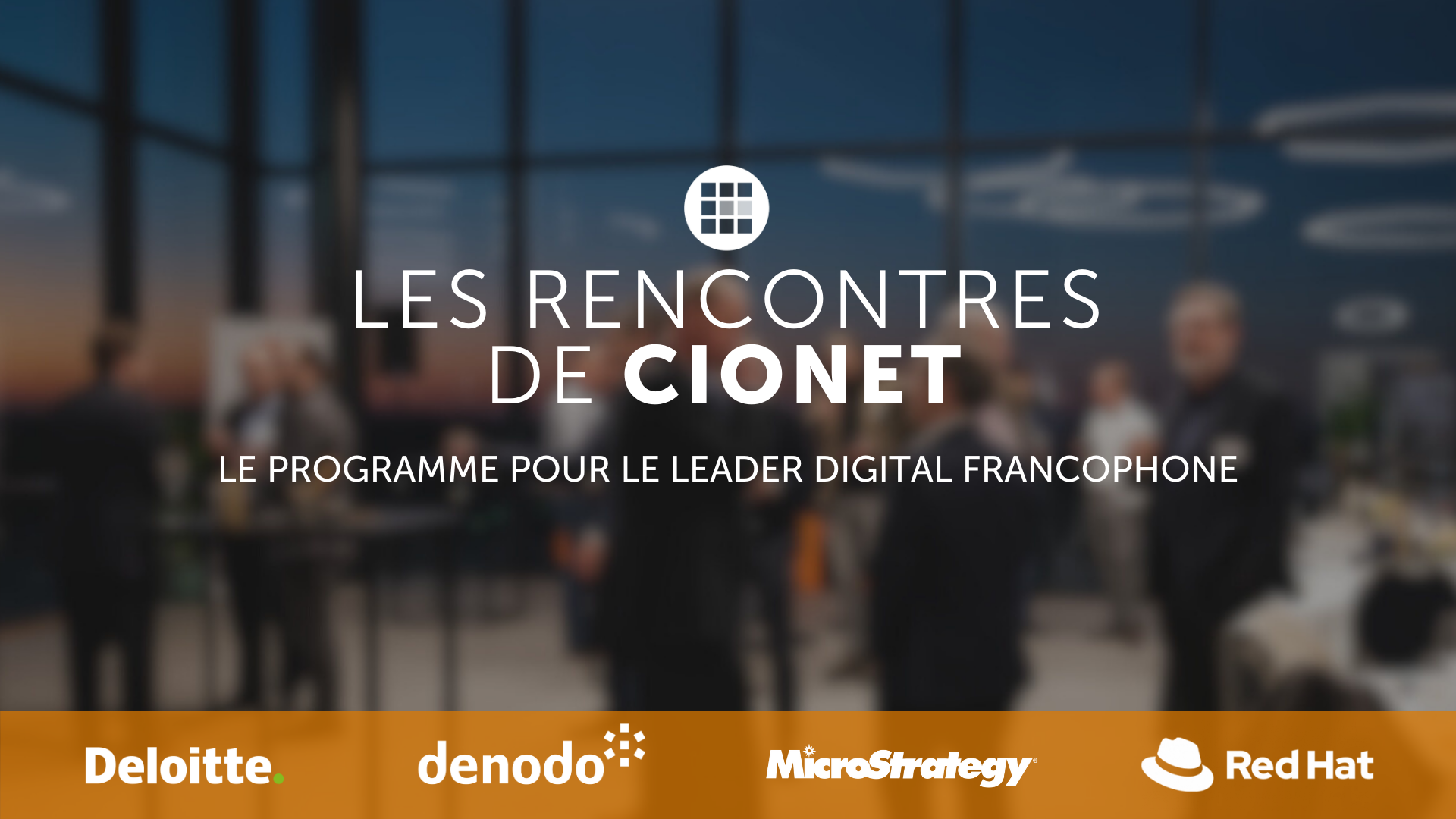
Découvrez la dynamique du leadership numérique aux Rencontres de CIONET, le programme francophone exclusif de CIONET pour les leaders numériques en Belgique, rendu possible grâce au soutien et à l'engagement de nos partenaires de programme : Deloitte, Denodo et Red Hat. Rejoignez trois événements inspirants par an à Liège, Namur et en Brabant Wallon, où des CIOs et des experts numériques francophones de premier plan partagent leurs perspectives et expériences sur des thèmes d'affaires et de IT actuels. Laissez-vous inspirer et apprenez des meilleurs du secteur lors de sessions captivantes conçues spécialement pour soutenir et enrichir votre rôle en tant que CIO pair. Ne manquez pas cette opportunité de faire partie d'un réseau exceptionnel d'innovateurs numériques !
Read More
CIONET is committed to highlighting and celebrating female role models in IT, Tech & Digital, creating a leadership programme that empowers and elevates women within the tech industry. This initiative is dedicated to showcasing the achievements and successes of leading women, fostering an environment where female role models are recognised, and their contributions can ignite progress and inspire the next generation of women in IT. Our mission is to shine the spotlight a little brighter on female role models in IT, Tech & Digital, and to empower each other through this inner network community.
Read More


-Apr-01-2022-10-58-34-57-AM.png)











-Dec-13-2023-10-53-15-5032-AM.png)




-Jun-12-2023-01-23-11-7540-PM.png)





-Apr-01-2022-10-58-34-68-AM.png)










-2.jpg)




-Sep-01-2022-02-47-55-60-PM.png)
-Nov-22-2023-08-56-42-6802-AM.png)
.png)

Would you like to know more about CIONET Belgium, membership or partnership opportunities? Do you have feedback or any other question? Send us a message!
You can either send us a registered handwritten letter explaining why you'd like to become a member or you can simply talk to us right here!